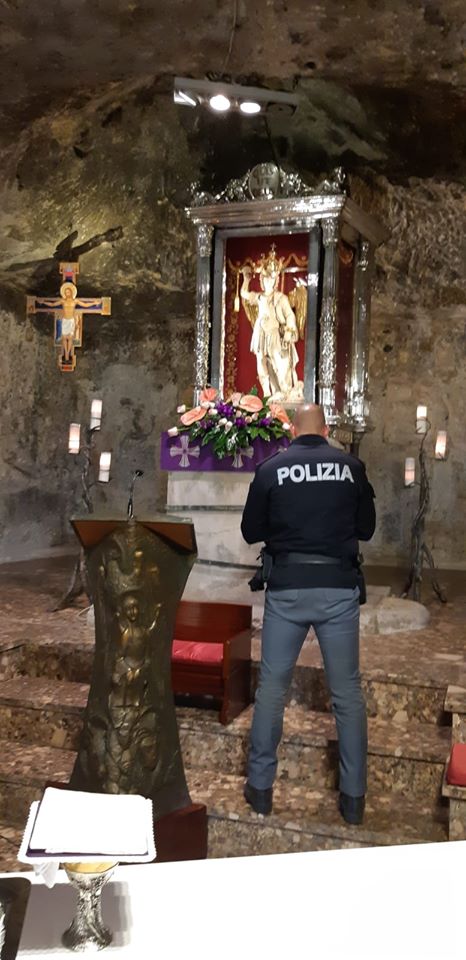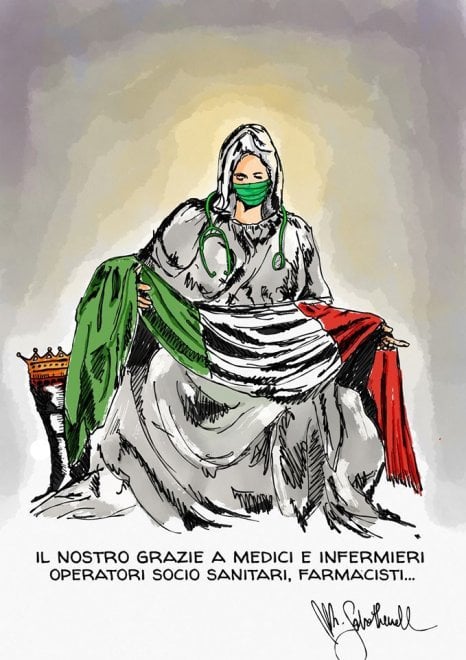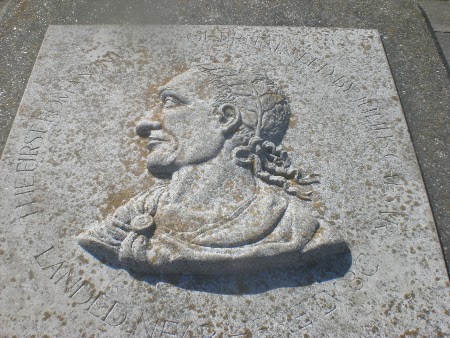My analysis of my reader Tony's attacks on Christianity, after
Support for Christianity Should Not Alienate People and
How Christian Charity Developed Western Ethics, Hospitals, Schools, continues. On the subject of slavery he writes:
The Bible actually condones slavery Enza. I can send you verse after verse from the Old Testament where God tells his people how to treat slaves, how they should be sold etc. Never once does the OT teach that slavery is wrong. In the New Testament neither Jesus nor Paul call for slavery to be abolished. On the contrary they provide teaching on how to treat slaves. The Bible was used as justification for slavery in the early colonies of America. Furthermore slavery was spread around the world as Christian Western powers built their Empires. One Pope, Nicholas V, actually issued a papal bull in 1452 authorising slavery of captured Muslims.
Here we find again the problem that I briefly mentioned in a previous article: Tony's failure to recognise the break between the Old Testament and the New Testament.
The Christian part of the Bible is the New Testament.
Although we can talk of a Judaeo-Christian tradition, we cannot talk of a Judaeo-Christian religion. These are two separate and different religions.
St Paul compared the condition of the world (including the Old Testament) before the advent of the religion of Jesus to a child-like, immature state.
Christ said: “The law and the prophets were until John [the Baptist]: from that time the gospel of the kingdom of God is preached” (Luke 16:16).
In addition, just about everything that Tony says about slavery comes to nothing for one simple reason: you cannot discuss a historical subject abstracting it from a historical context.
When we talk about slavery, we may forget that we are looking with modern eyes at an institution that has been part of human history in virtually all cultures.
No culture on the globe has ever questioned the morality of slavery, no culture has ever effectively abolished it. Only in relatively recent times this has been done - and it was Christians who did it.
If Tony, and all of us, reject slavery it is because we were born in the Christian West, regardless of whether we consider ourselves Christian individually or not. Or, as the great Oriana Fallaci, who was among the first to alert the West to the dangers of Islam after 9/11 and who called herself a "Christian atheist", said: "We are all Christian".
Very early the Church baptised slaves and treated them as human beings equal to all others in dignity. They were allowed to marry, be ordained, and some became saints.
St. Isidore of Seville (born about 560 AD) said: "God has made no difference between the soul of the slave and that of the freedman."
His teaching has its roots in St. Paul's
First Epistle to Timothy (1 Timothy 1:10), which condemns slave traders and places them among the sinful and lawbreakers, and
Epistle to Philemon. In the latter, Paul writes that he is returning fugitive slave Onesimus to his master Philemon, but he urges Philemon to regard Onesimus as a beloved brother.
Historian Rodney Stark writes in
The Victory of Reason:
Slavery ended in medieval Europe only because the church extended its sacraments to all slaves and then managed to impose a ban on the enslavement of Christians (and of Jews). Within the context of medieval Europe, that prohibition was effectively a rule of universal abolition. [Emphasis added]
This was during the "Dark Ages".
Later, when the Spanish
Conquistadores were enslaving South American Indians and importing African black slaves, their main adversary was the Catholic bishop and missionary Bartolomé de Las Casas, "Protector of the Indians", who devoted 50 years of his life actively fighting slavery and the abuse of native populations.
His efforts led to a greater focus on the ethics of colonialism and to many improvements in the legal status of indigenous peoples, including a 1542 Spanish law prohibiting the enslavement of Indians. Las Casas is considered as one of the first advocates for universal human rights.
In 1537 Pope Paul III issued the papal bull
Sublimus Dei against the enslavement of the indigenous peoples of the continent of America, who were non-Christian. A papal bull is a document of rare importance and significance, formal and profoundly authoritative.
Sublimus Dei shows in an exceptionally meaningful way the Christian approach to slavery as early as in the Renaissance:
We define and declare by these Our letters, or by any translation thereof signed by any notary public and sealed with the seal of any ecclesiastical dignitary, to which the same credit shall be given as to the originals, that, notwithstanding whatever may have been or may be said to the contrary, the said Indians and all other people who may later be discovered by Christians, are by no means to be deprived of their liberty or the possession of their property, even though they be outside the faith of Jesus Christ.
Yes, slavery persisted, and sometimes received ecclesiastical permission. Yes, supporters of slavery before the American Civil War used the Bible as justification for it. But abolitionists could easily point out that slavery was against the whole Christian message of love for your brother and neighbour like for yourself and equality of all men before God.
If we are too attached to and fixated on the letter of the Scriptures, we risk losing the most important part, their spirit, the whole picture, namely the message that Jesus conveyed with all His entire life, His words and His actions.
He was not a slave owner, like Muhammad 600 years after Him.
So, anti-slavery views were present in Christian thought and practice since the 6th century AD.
Modern abolitionism, the anti-slavery movement, started in Britain in 1787 with the foundation of the Society for Effecting the Abolition of the Slave Trade. The people behind it were Christians, including William Wilberforce and
Thomas Clarkson, who wrote:
We cannot suppose therefore that God has made an order of beings, with such mental qualities and powers, for the sole purpose of being used as beasts, or instruments of labour.
The strong, prolonged opposition to slavery that followed - a unique example in the whole history of mankind - was a formidable effort, with nothing to gain and everything to lose economically by ending this enormously profitable business. Only an exceptional moral force could have achieved it: and that force was the profound Christian conviction of the abolitionist leaders that slavery was wrong.
There were ecclesiastical figures supporting slavery, as there were in every other category of people. But, with rare exceptions, only devout, committed Christians - priests, monks, Christian laymen - opposed slavery. Atheist, secular, non-Christian opposition was unheard of for generations.
If we used the same yardstick employed by anti-Christians, we should say: what have atheists done to condemn or resist slavery when it was difficult to do so, when it was not yet politically correct and orthodox to be abolitionist?
American abolition crusader
William Lloyd Garrison declared:
Abolitionism, what is it? Liberty. What is liberty? Abolitionism. What are they both? Politically, one is the Declaration of Independence; religiously, the other is the Golden Rule of our Savior. [Emphasis added]
When Britain abolished the slave trade in 1807 and then slavery in 1834, it had to fight against African tribal leaders who wanted to continue their profitable trade in African slaves. These chieftains were also virulently hostile to Christian missionaries because of their opposition to slavery, and not due to their desire to convert.
The current, politically correct orthodoxy about slavery that Tony espouses demonstrates for the umpteenth time how the enemies of Christianity and the enemies of the West use - not coincidentally - similar, false arguments to attack both, showing once again how the fate of the West is intrinsecally tied to that of Christianity.
Not only were black Africans and Arab Muslims deeply involved in slave trafficking - and in Islam slavery is still practised today -, but whites were also enslaved by Muslims in great numbers. But, while we never cease to hear about the nasty, racist whites making slaves, we never start hearing about other ethnic and religious groups doing the same, including to whites.
In the same way as Christianity is wrongly and unjustly castigated for slavery - when only Christians abolished it permanently -, so the West is uniquely berated for it. If you hear or read "liberal" thinkers, commentators and all the vast numbers of people that they managed to brainwash, you must be forvigen for thinking that slavery, as well as colonialism, are wicked Western, white, European, Christian inventions. All other populations of the earth are just the innocent victims, and they never harmed a hair on anybody's head.
What has been used to whip white Westerners has been used to whip Christians.
Look at what Westerners and Christians have in common and see if it can be a coincidence: they are both disproportionately attacked for two phenomena - slavery and harmful colonialism - that have existed throughout history and geographical locations, and they are both those who in fact saw the immorality of them and put an end to them.
Rather than going through the long history of how Western colonialism is not what it has been portrayed, of how it was often economically disadvantageous for the European powers involved but on many occasions motivated by the desire to help underdeveloped populations - aim that was often achieved -, I'll point you below to well-researched posts on the subject.
The Islamic world never abolished slavery, and still practises it today.
And remember that it was the European imperial powers which put an end to both the frequent raids and piracy by Muslims that for centuries tormented the Southern European coasts, and to the payment of the extortionate jizya tax demanded from the subjugated Christians living in Muslim lands.
The latter was for those unfortunate brothers and sisters a short-lived respite until multiculturalism, producing Islamophilia on one hand and anti-Christianity on the other, strengthened the Muslim world.
To be continued.
Further reading on slavery, European colonialism and Islam:
http://islamversuseurope.blogspot.co.uk/2012/07/north-african-predation-upon-europeans.html
http://islamversuseurope.blogspot.co.uk/2011/08/did-europe-grow-rich-from-slavery-and.html
http://islamversuseurope.blogspot.co.uk/2012/12/shocking-display-of-dhimmitude-in.html
http://islamversuseurope.blogspot.co.uk/2013/10/slavery-around-world-today.html
http://www.youtube.com/watch?v=CrxmdjaK7Cs
Photo by Elliott Brown (Creative Commons CC BY 2.0).
 Mayor Consecrates Venice to the Immaculate Heart
Mayor Consecrates Venice to the Immaculate Heart



